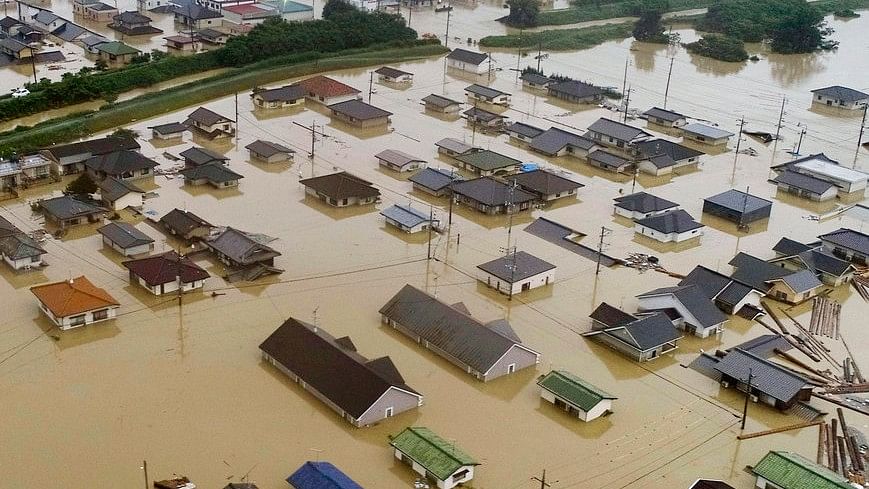In Photos: Over 200 Dead in Japan’s Worst Floods in 36 Years
“We’ll cut through the bureaucracy to secure the goods people need for their lives,” Japanese PM Shinzo Abe said.

Municipal workers in Japan struggled on Friday, 13 July, to restore water supply in the flood-hit western region as inundation caused by a record downpour last week has killed more than 200 people in the worst weather disaster in 36 years.
Communities that grappled with rising floodwaters last week now find themselves battling scorching summer temperatures well above 30 degrees Celsius, as foul-smelling garbage piles up in mud-splattered streets.
"We need the water supply back," said Hiroshi Oka, 40, a resident helping to clean up the Mabi district in one of the hardest-hit areas, the city of Kurashiki, where more than 200,000 households have gone without water for a week.
"What we are getting is a thin stream of water, and we can't flush toilets or wash our hands," he added, standing over a 20-litre plastic tank that was only partly filled after almost four hours of waiting.
Water supply has been restored to some parts of the district, a city official told Reuters, but he did not know when normal operation would resume, as engineers are still trying to locate water pipeline ruptures.
Public broadcaster NHK has spread advice on coping with high temperatures and maintaining hygiene.
Chief cabinet secretary Yoshihide Suga, the government spokesperson, urged people in flood-hit areas to take precautions against the heat, and guard against thunderstorms.
"People still need to be aware of the possibility of further landslides," he told a regular news conference on Friday.
Severe weather has increasingly battered Japan in recent years, including similar floods last year that killed dozens of people, raising questions about the impact of global warming.
(At The Quint, we are answerable only to our audience. Play an active role in shaping our journalism by becoming a member. Because the truth is worth it.)